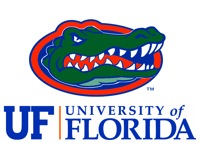Below is a summary of the abstract you submitted. Presenting author(s) is shown in bold.
If any changes need to be made, you can modify the abstract or change the authors.
You can also download a .docx version of this abstract.
If there are any problems, please email Dan at dar78@pitt.edu and he'll take care of them!
This abstract was last modified on May 9, 2016 at 3:34 p.m..

The HHMI SEA-Phages class at UF this year annotated the genome of Mycobacteriophage Louie6, which was isolated by students participating in the HHMI SEA-Phages program at Washington State University at Pullman WA. Students isolated Louie6 from soil collected at the opening of a livestock barn located outside the city limits of Monroe. Plaque morphology characterized by Pullman students suggests that Louie6 is a temperate phage. Genome sequence revealed that Louie6 is a member of the A3 cluster. Louis6’s genome is 50,899 bp in length, which is large for A3 phages whose mean genome length is 50,242 with a range of 47,373 to 50,963 bp. Louis6's genome sequence is similar to all A2 phages, and exhibits >= 99% identity to several, including Phoxy and Bxz2, which have been annotated and submitted to genbank. BlastN analysis reveals 3 distinct aligned regions between Louie6 and Bxz2, and 5 between Louie6 and Phoxy. Most gaps between Louie6 and either Phoxy or Bxz2 are small (~200bp), but one gap of 1.7kb exists between Louie6 and Phoxy, which reflects the fact that the Phoxy genome is >1.6kb smaller. Louie6’s genome has been annotated to identify 91 protein coding features and 3 predicted tRNAs. 35 of the annotated genes are encoded by the forward strand and 61 are encoded by the reverse strand. The 35 forward strand encoded genes are clustered into the first 25Kb of the genome. 33 of these are arranged contiguously, while the one of the remaining 3 forward genes is separated from the main group by a pair of genes in reverse orientation, and the remaining two are found at the right-end of the genome. Details of the genome characterization of Louie6 are discussed, including a comparative analysis of gene content within A3 cluster phages and between Louie6 and diverse phage clusters.

